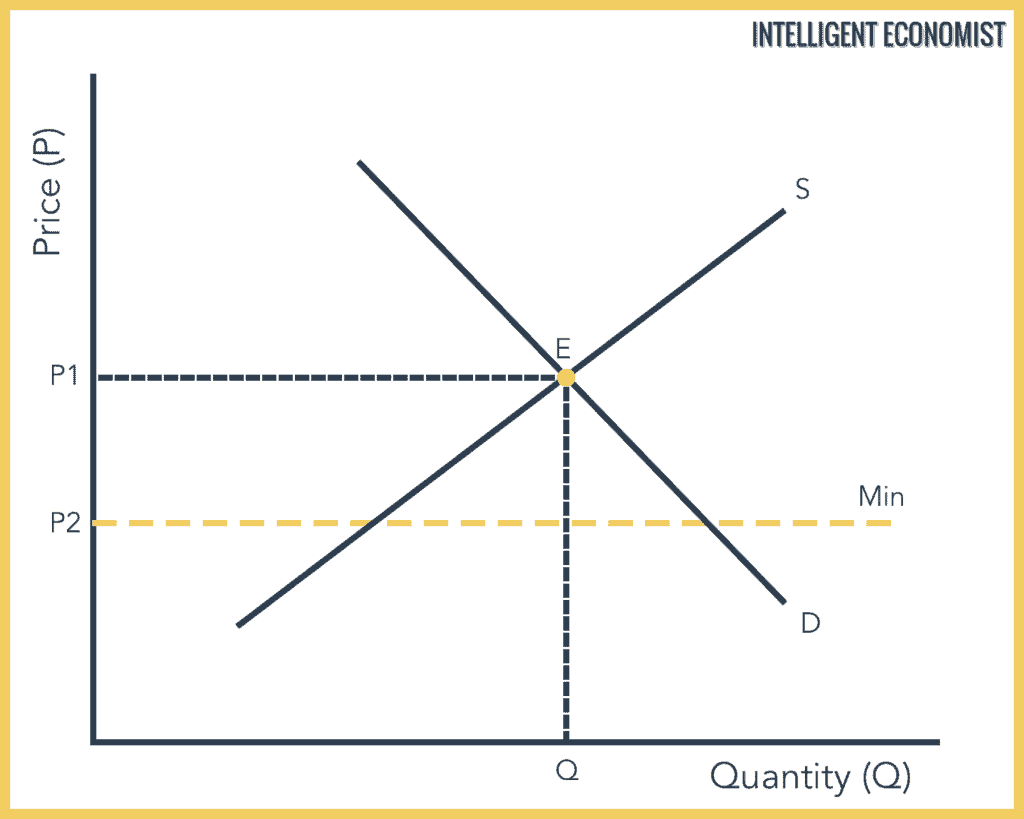But this is a control or limit on how low a price can be charged for any commodity.
Examples where price ceilings and price floors exist.
Percentage tax on hamburgers.
Taxes and perfectly inelastic demand.
Price ceilings are enacted in an attempt to keep prices low for those who demand the product.
Real life example of a price ceiling in the 1970s the u s.
The effect of government interventions on surplus.
They are usually put in place to protect vulnerable buyers or in industries where there are few suppliers.
Like price ceiling price floor is also a measure of price control imposed by the government.
This is the currently selected item.
Taxes and perfectly elastic demand.
These price floors and price ceilings are used to help manage scarce resources and protect buyers and sellers.
The opposite of a price ceiling is a price floor which sets a minimum price at which a product or service can be sold.
It is sometimes the case that rent controls create backdoor arrangements ranging from requirements that tenants rent items that they do not want to outright bribes that result in rents higher than would exist in the absence of the ceiling.
Rent controls are an example of a price ceiling and thus they create shortages of rental housing.
It is legal minimum price set by the government on particular goods and services in order to prevent producers from being paid very less price.
Price ceilings and price floors.
The graph below illustrates how price floors work.
A minimum wage law is the most common and easily recognizable example of a price floor.
Price ceilings impose a maximum price on certain goods and services.
A good example of this is the oil industry where buyers can be victimized by price manipulation.
Price and quantity controls.
A price floor means that the price of a good or service cannot go lower than the regulated floor.
Example breaking down tax incidence.
For example price ceilings to limit what producers can charge have been proposed in recent years for prescription drugs doctor and hospital fees the charges made by some automatic teller bank machines and auto insurance rates.
However a price ceiling and price floor can also result in some inefficiencies in the marketplace.
However other price floors exist in any sector that the government is trying to protect such as agricultural goods or other sensitive industries.
Perhaps the best known example of a price floor is the minimum wage which is based on the view that someone working full time should be able to afford a basic standard of living.
The federal minimum wage in 2016 was 7 25 per hour although some states and localities have a higher minimum wage.

